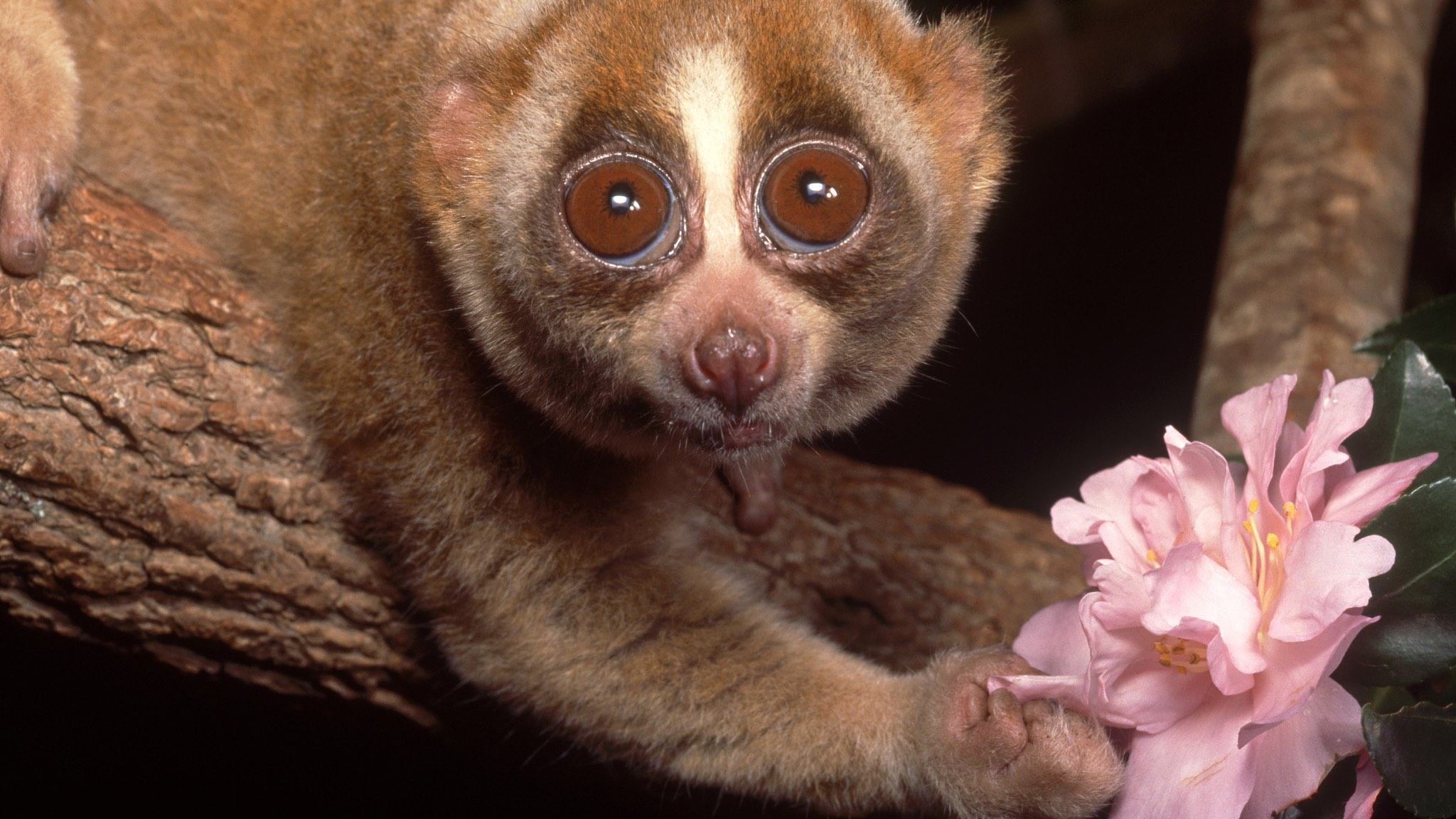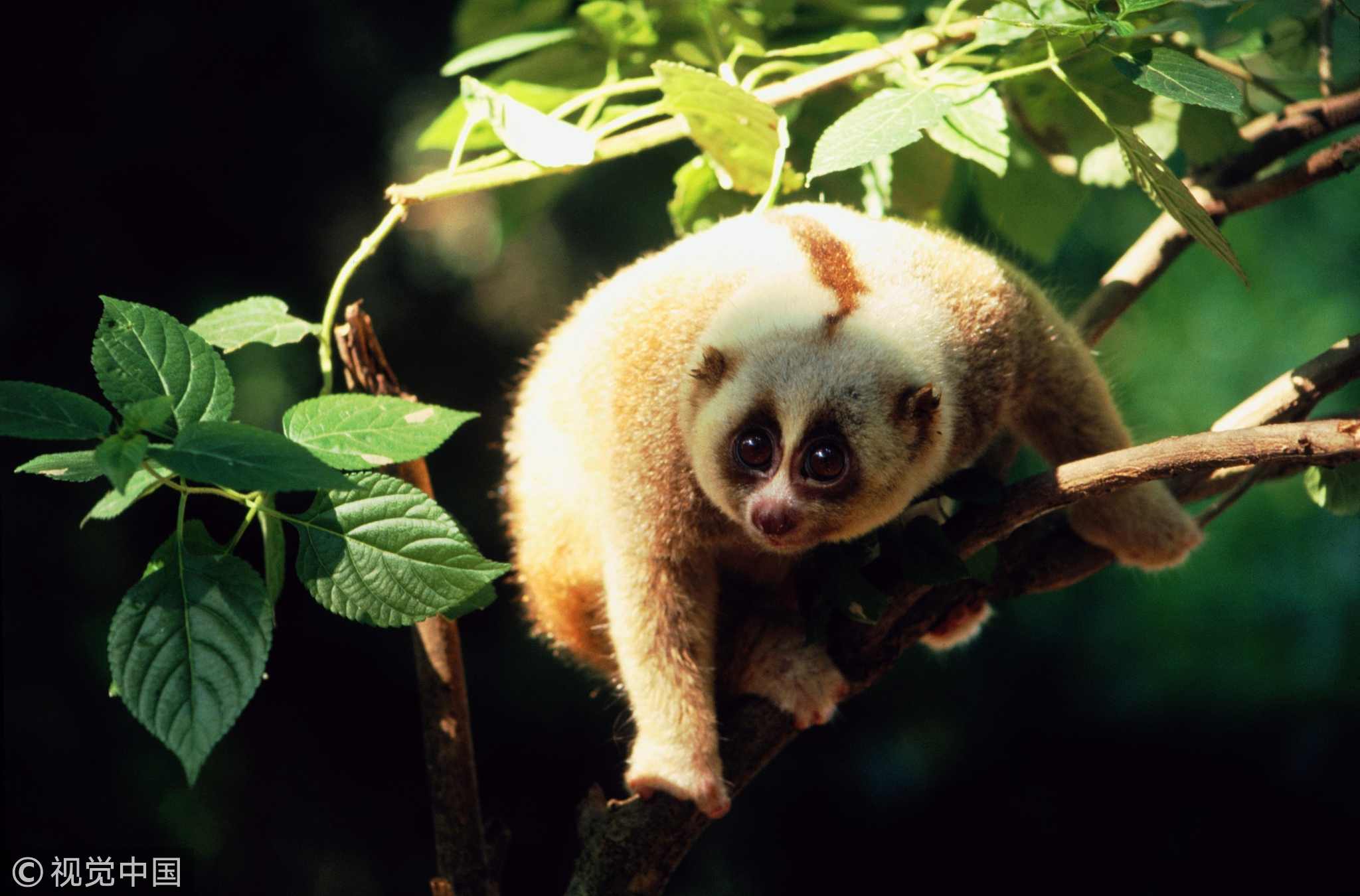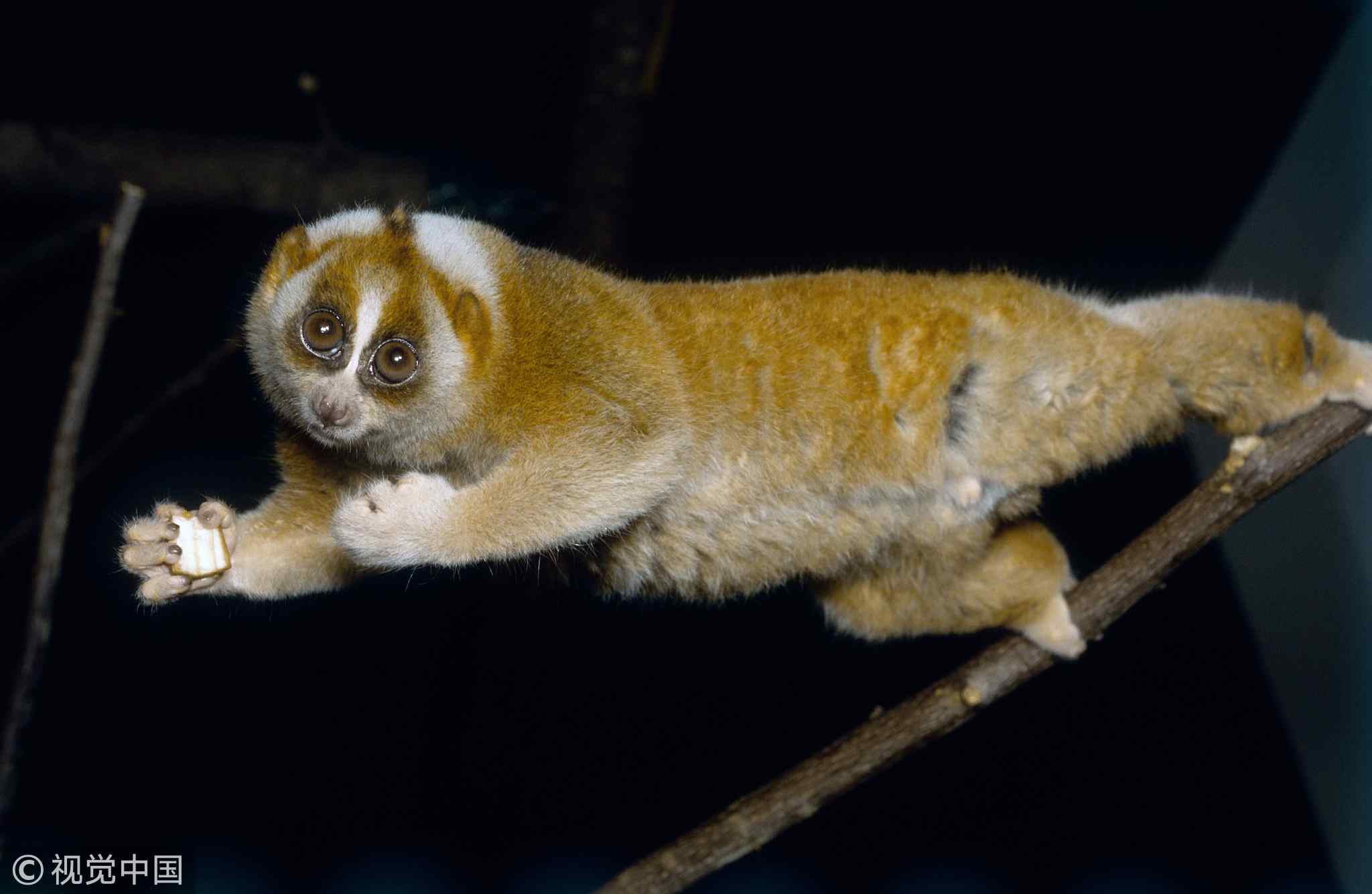
Nature
10:15, 28-Dec-2018
Rescued slow lorises returned to wild in SW China
Updated
10:10, 31-Dec-2018
CGTN
01:01

Wildlife conservation authorities in southwest China's Yunnan Province have released 10 slow lorises back to the wild.
The ten lorises, along with five others, were found injured when they were rescued by residents and authorities in the Dehong Dai and Jingpo Autonomous Prefecture earlier this year. They were transferred to a local wildlife center for treatment and recovery.

A slow loris rests on a branch. /VCG Photo
A slow loris rests on a branch. /VCG Photo
"Examinations by professionals in our center showed that the ten slow lorises were disease-free and met the conditions for release, so we decided to send them to the Tongbiguan Nature Reserve in Yunnan Province," said Fan Yumai from the Prefecture's Wildlife Shelter and Rescue Center.
"This area is far away from residential areas, so animals here will not affect the life of local residents. Also, the Tongbiguan Nature Reserve is heavily populated with wild animals, so releasing the lorises here is conducive to their reproduction," said Zhang Youbing, the director of the forestry protection office of the Prefecture's Forestry Bureau.

A slow loris at Duke University Primate Center, U.S. /VCG Photo
A slow loris at Duke University Primate Center, U.S. /VCG Photo
Slow lorises have a round head, a narrow snout, and iconic big eyes. They are nocturnal omnivores, and eat insects, small birds and reptiles, eggs, fruits, nectar, among others.
Cute as they look, they are the only known venomous primate with a toxic bite that causes painful swelling. The toxin is released by licking a gland on their arm, and the secretion is activated by mixing with their saliva.

A slow loris at Sarawak, Malaysia. /VCG Photo
A slow loris at Sarawak, Malaysia. /VCG Photo
The slow loris is mainly found in the southwestern parts of Yunnan Province and the southern parts of south China's Guangxi Zhuang Autonomous Region.
Each of the slow loris species that had been identified prior to 2012 is listed as either "Vulnerable" or "Endangered" on the IUCN Red List. The three newest species are yet to be evaluated.
In China, slow lorises are a class I protected species, and keeping them as pets is prohibited by law.

SITEMAP
Copyright © 2018 CGTN. Beijing ICP prepared NO.16065310-3
Copyright © 2018 CGTN. Beijing ICP prepared NO.16065310-3